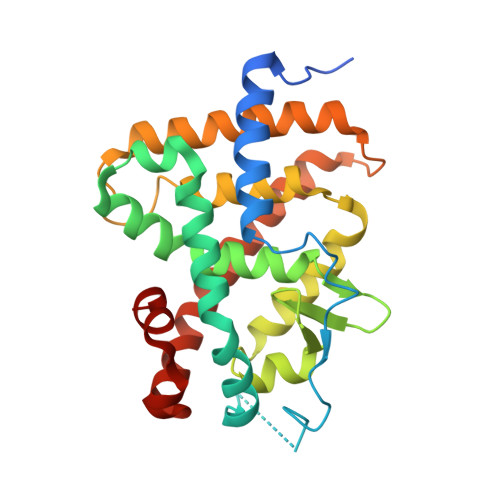Molecular basis for dimer formation of TRbeta variant D355R.
Jouravel, N., Sablin, E., Togashi, M., Baxter, J.D., Webb, P., Fletterick, R.J.(2008) Proteins 75: 111-117
- PubMed: 18798561
- DOI: https://doi.org/10.1002/prot.22225
- Primary Citation of Related Structures:
3D57 - PubMed Abstract:
Protein quality and stability are critical during protein purification for X-ray crystallography. A target protein that is easy to manipulate and crystallize becomes a valuable product useful for high-throughput crystallography for drug design and discovery. In this work, a single surface mutation, D355R, was shown to be crucial for converting the modestly stable monomeric ligand binding domain of the human thyroid hormone receptor (TR LBD) into a stable dimer. The structure of D335R TR LBD mutant was solved using X-ray crystallography and refined to 2.2 A resolution with R(free)/R values of 24.5/21.7. The crystal asymmetric unit reveals the TR dimer with two molecules of the hormone-bound LBD related by twofold symmetry. The ionic interface between the two LBDs comprises residues within loop H10-H11 and loop H6-H7 as well as the C-terminal halves of helices 8 of both protomers. Direct intermolecular contacts formed between the introduced residue Arg 355 of one TR molecule and Glu 324 of the second molecule become a part of the extended dimerization interface of 1330 A(2) characteristic for a strong complex assembly that is additionally strengthened by buffer solutes.
Organizational Affiliation:
Department of Biochemistry and Biophysics, University of California San Francisco (UCSF), San Francisco, California 94158, USA. njouravel@msg.ucsf.edu
















